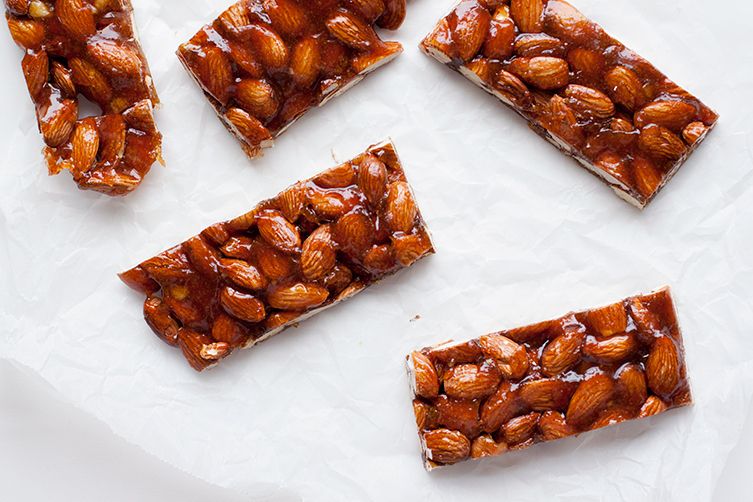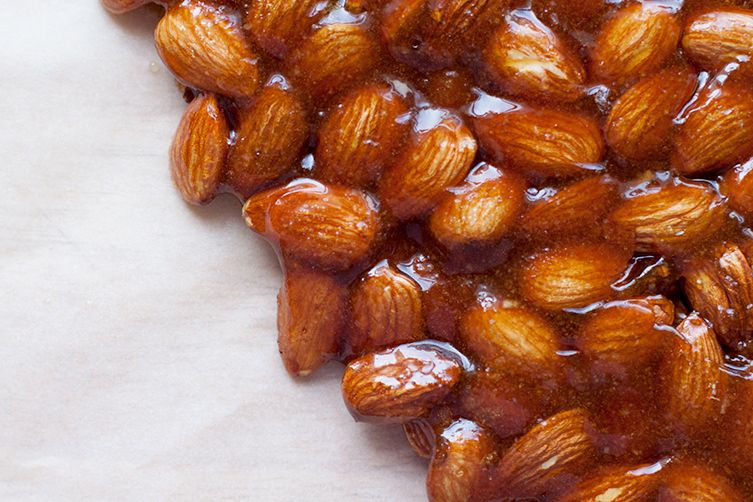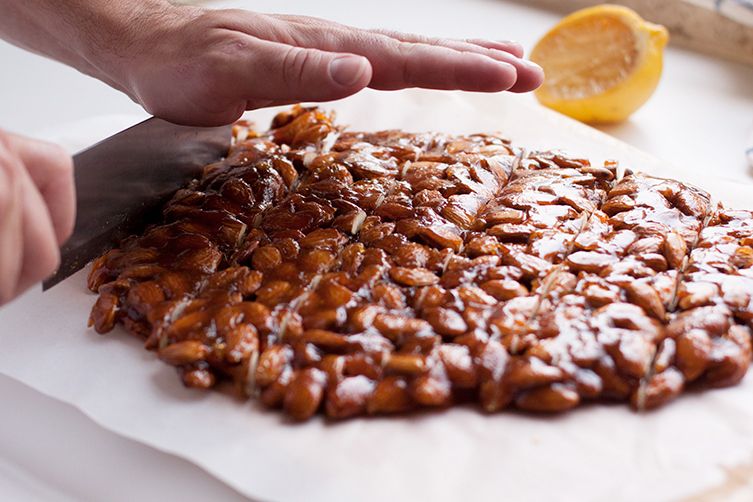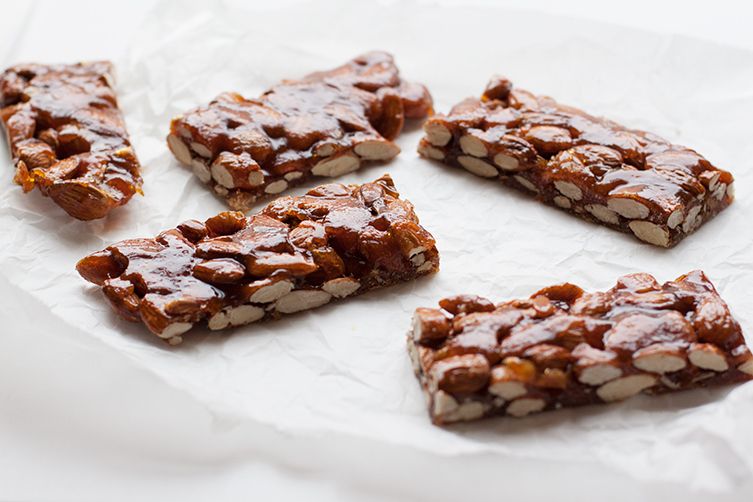Every Tuesday, Italian local Emiko Davies is taking us on a grand tour of Italy, showing us how to make classic, fiercely regional dishes at home.
Today: A sticky two-ingredient brittle for any occasion.

This sticky, brittle made from almonds in hard caramel is a Sicilian specialty, symbolic of all holidays, fairs, and festivals, from Carnival to Christmas. But it's also found all year round over the whole country, most often at street fairs—where hefty blocks wrapped in cellophane are sold from stalls bearing all sorts of traditional candies and treats like marzipan fruit and cookies. In Sicily, particularly in the Noto Valley, you'll find it in pastry shops and cafés during any month of the year.
It's known as torrone siciliano (Sicilian nougat) but unlike the torrone that most are used to—the soft, marshmallowy nougat made with sweetened egg whites and studded with nuts—this is more of a brittle. It requires just two main ingredients: almonds and sugar.
Even though Pellegrino Artusi, in his 1891 cookbook, cites the origins of torrone siciliano as an ancient Spanish recipe, this sweet brittle is most definitely Arabic in origin (after all, Sicily was an Arabic island for two centuries during the Middle Ages). This torrone is based on a treat originally made with sugar, honey, and sesame seeds, and its name in Sicilian dialect, cubbàita, comes from the arabic word qubbayt.

There are only a few variations when it comes to proper Sicilian torrone. You find it almost always in its classic form with almonds, though whether they are blanched or left with their skins on is a matter of personal taste and appearance. Around the area of Sicily's Mount Etna, pistachios are a popular variation (especially in Bronte, where some of the best pistachios in the world are grown), and some are even dipped in dark chocolate.
Elsewhere in Italy you will find this same sort of brittle under the name croccante (which literally means crunchy), made with a variety of different nuts: hazelnuts, pine nuts, or—in a thinner, more delicate version—sesame seeds. In Rome, I had an excellent, salty-sweet peanut croccante that was served with espresso, the perfect finish to an abundant trattoria meal.
The procedure is much the same in all these cases. Melt down the sugar. As soon as it liquifies and turns that deep brown caramel color, mix in the nuts and smooth the whole thing out onto an oiled marble slab or oiled parchment. (Some recipes call for simply combining the almonds and sugar together in a pot from the get-go.) From here, you have to work pretty quickly, flattening the mixture out with whatever you're game enough to put into contact with bubbling, hot caramel: wet hands and elbow grease, a rolling pin, or—most traditionally—half of a cut lemon, which will also helps to give the candy a nice shine. You don't have much time to get it to the desired shape and height before it solidifies. After that, all that's left to do is chop it into squares (while still slightly warm) and then share it around.

Don't be daunted about the idea of making caramel. It is an extremely simple recipe, just be aware there are a few key points when you need to be paying attention—otherwise you can easily end up with a disaster.
- First: Keep your eye on sugar when it's on the stove. The sugar gets to a point where it changes character and color very quickly. One minute, it's a pile of sugar melting very slowly; the second you turn your back, it's a bitter black mess. You want to catch it when it has just finished melting into a syrup the color of dark amber but not too much darker. (What does dark amber look like? This post has more details.) You're aiming for a pleasantly bitter flavor like the top of a crème brûlée, so keep an eagle eye on the pot.
- Second: You will be very, very tempted to touch the sugar as you're waiting for it to melt. Resist. Stirring or fiddling with the sugar as it's melting can introduce air and cause crystallization. As soon as the sugar goes into the pot, do not touch it! Just watch it until it melts into a syrup, or give the pot a very gentle shake once the sugar starts to melt. Oh, and don't use plastic to stir the almonds into the syrup—it melts (spoken from experience). Go with a wooden spoon to be sure.
- Third: Do not let yourself get burnt by caramel. It's a kitchen accident you do not want to experience.
- Fourth and final-most point: As soon as the nuts go into the caramel and the whole thing begins to cool down, the mixture will be begin to harden quickly and become difficult to work with, so have everything prepared beforehand.

Torrone Siciliano (Sicilian Almond Brittle)
Olive oil, for greasing
1/2 pound (500 grams or 2 1/2 cups) sugar
1/2 pound (500 grams) almonds
1/2 lemon, optional
See the full recipe (and save and print it) here.
Photos by Emiko Davies






See what other Food52 readers are saying.